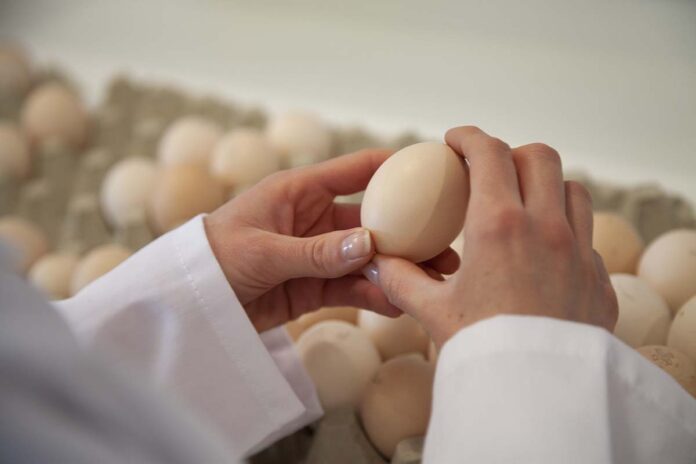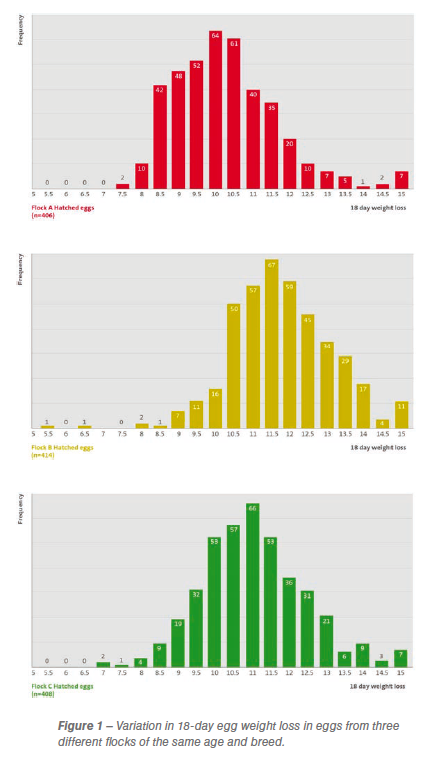
A chicken egg has to lose around 11-13% of its original weight during the first 18 days of incubation. This weight loss is needed for proper embryonic development and to create an air cell that is large enough to support lung ventilation from internal pipping until hatch.
Lotte Hebbink, Incubation Specialist Pas Reform Academy
In some hatcheries egg weight loss is measured as a standard procedure. Usually a couple of setter trays per flock or per setter are weighed before setting and on the 18th day of incubation to determine average weight loss. This information can be used to optimise incubation conditions. But what about the variation between the individual eggs?

Individual egg weight loss
To find an answer to this question, we carried out a small study using 450 eggs from each of 3 different flocks (same breed, 30 weeks). The eggs were individually marked and weighed before setting and on the 18th day of incubation. Unhatched eggs and eggs with visible cracks were removed from the analysis.
The graphs show the variation in individual egg weight loss. The average weight loss for flock A, B and C was 10.1%, 11.6% and 10.8% respectively. The minimum egg weight loss was 7.1%, 4.9% and 6.7% respectively. The maximum was 19.3%, 26.6% and 22.3% (no cracks). A break-out analysis of the unhatched eggs revealed no signs of too high or too low weight loss.
Causes of variation
Assuming ambient conditions of temperature and relative humidity are equal, possible causes of variation in weight loss could be differences in pore structure, shell thickness or abnormalities in eggshell structure like shell mottling. Very high weight losses might be caused by thin shells due to a disease like IB or hair line cracks.
Effect on embryo and chick quality
The findings of this small study suggest that embryos are able to hatch within a wide spectrum of weight loss (5-27%). This is in line with a study (Davis, 1988) where the range was 6-20%. That study showed that embryos facing extreme water losses managed to survive by recycling water and redistributing it between the (extra)embryonic compartments. Excess albumen was found in 21-day eggs that had lost as little as 6% weight. More than 20% weight loss resulted in dehydration of the amniotic fluid, the blood and skin of the embryo, and early depletion of the allantoic fluid.
Extremely low and high weight loss cause osmotic stress in the developing embryo. The chorioallantoic membrane and the kidneys work together to maintain osmotic and ionic homeostasis. Suboptimal water losses can influence the morphological development of the kidneys (Bolin and Burggren, 2016). When pushed to the limits of extreme weight loss, some embryos will fail to hatch due to too small air cells or as a result of failing to maintain proper osmotic homeostasis.
Conclusions
- Aiming for an average weight loss of 11-13% will keep most embryos within the acceptable limits.
- Avoid a too low average weight loss (<10%) to prevent the air cell from becoming too small for the chick to properly hatch.
- Poor egg shell quality can lead to extreme weight loss in individual eggs (>20%). As a consequence, these embryos face osmotic stress and developmental changes during incubation.















